If you are totally new to AJAX (which stands for Asynchronous Javascript And XML), the AJAX entry on wikipedia is a good starting point:
Like DHTML and LAMP, AJAX is not a technology in itself, but a group of technologies. AJAX uses a combination of:
- HTML and CSS for marking up and
styling information.
- The DOM
accessed with JavaScript to
dynamically display and interact with
the information presented.
- A method
for exchanging data asynchronously
between browser and server, thereby
avoiding page reloads. The
XMLHttpRequest (XHR) object is usually
used, but sometimes an IFrame object
or a dynamically added tag is
used instead.
- A format for the data
sent to the browser. Common formats
include XML, pre-formatted HTML, plain
text, and JavaScript Object Notation
(JSON). This data could be created
dynamically by some form of
server-side scripting.
As you can see, from a pure technological point of view, there is nothing really new here. Most of AJAX parts were already there in 1994 (1999 for the XMLHttpRequest object). The real novelty was to use these parts together as Google did with GMail (2004) and Google Maps (2005). Actually, both sites contributed heavily to the promotion of AJAX.
A picture being worth a thousand words, below a diagram that illustrates the communication between the client and the remote server, as well as the differences between the classic and the AJAX-powered applications:

For the orange part, you can do everything by hand (with the XMLHttpRequest object) or you can use famous JavaScript libraries like jQuery, Prototype, YUI, etc to "AJAXify" the client-side of your application. Such libraries aim to hide the complexity of JavaScript development (e.g. the cross-browser compatibility), but might be overkill for a simple feature.
On the server-side, some frameworks can help too (e.g. DWR or RAJAX if you are using Java), but all you need to do is basically to expose a service that returns only the required informations to partially update the page (initially as XML/XHTML - the X in AJAX - but JSON is often preferred nowadays).
